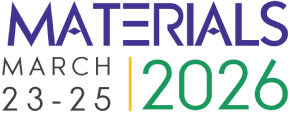Title : Recognizing the Potential of 4D Printing
Abstract:
Four-dimensional (4D) printing is still a young technology used to introduce material functionalities into components in an additive manufacturing (AM) process. The use of shape memory polymers such as thermoplastic polyurethanes or polylactic acid enables the production of thermoresponsive objects by implementing internal stresses in course of AM. The associated gain in functionality offers several advantages. By setting property profiles in the preceding synthesis process and by selecting appropriate print settings, a high degree of control over thermoresponsiveness can be achieved. In addition, a time- and energy-consuming thermomechanical treatment, which is often required for shape memory polymers, is no longer necessary; the thermoresponsive objects can be taken directly from the printer. Ideally, the 4D-printed objects then also follow a lightweight design.
Here we report on the design development of thermoresponsive objects, which we produced by fused filament fabrication. The functional devices offer excellent opportunities for carrying out assembly processes, while later a material-inherent programmable stiffness can be used for their disassembly, e.g. at the end of use or end of life. In perspective, the reuse of materials in 4D printing or other polymer processing techniques can further enhance their sustainability and thus initiate important steps toward a circular economy for functional materials with comparable property profiles. Against this background, recent work by the Fraunhofer Cluster of Excellence Programmable Materials CPM (project 630507) highlights opportunities and challenges of 4D printing and identifies possibilities for its use in areas such as healthcare.
What will audience learn from your presentation?
- Explain how the audience will be able to use what they learn?
- Polymer and process development for 4D printing
- Criteria for the design of 4D printed objects
- New usage concepts for 4D printed objects
- How will this help the audience in their job? Is this research that other faculty could use to expand their research or teaching? Does this provide a practical solution to a problem that could simplify or make a designer’s job more efficient? Will it improve the accuracy of a design, or provide new information to assist in a design problem? List all other benefits.
- Selecting the right polymer materials for 4D printing
- 4D printing with commercially available printers
- Transfer of knowledge to new applications



